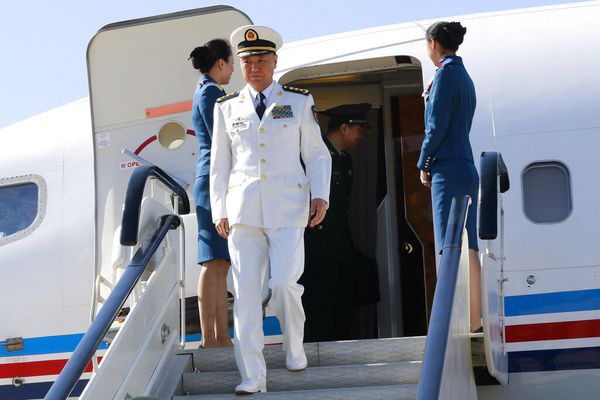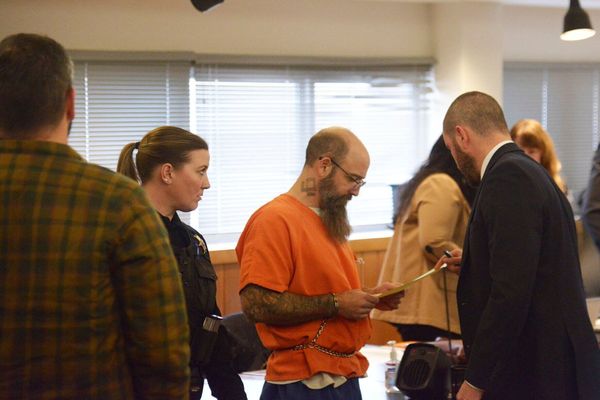
I am watching hares at rest in the growing wheat through my binoculars. One pulls its long, sundae-spoon ears through its paws to clean them. Another stretches like a dog, yawns and lies down, when something glides behind the harbour of its back like a yacht. There is no rise and fall in the movement of the body, with its short, cryptic, brown, black and white strokes. I blink and look away, refocus. There is a hare-like goggle-eye between wheat blades; a wild little sun with a small black planet dotted within. Pictures in field guides pop up like sleeping tabs in my brain: a stone-curlew. Two. Two stone-curlews.
The first bird sails slowly back into view, the plimsoll line of a wing bar of white feathers aligned with the top of the young wheat. It stays straight as a spirit level as it cruises through the field. At a gap in the precision-drilled crop, it suddenly stands tall, and I realise that it has been travelling along in comedy subterfuge on bent knees, or hocks; these are the “thick knees” of its family name (Burhinus oedicnemus); it is not, in fact, a curlew. There is something else maritime about it; not just the smooth movement, or the white wing bar of fluttering bunting – its long yellow legs and its wader-short thick bill are in the same yachtsmen’s welly yellow. It makes me smile.
The second bird stands too and the pair are together in a patch of sunlight, vivid against blue sky. I can see the way their crepuscular‑evolved eyes bulge and angle downwards, and how it matches the sad-clown-smile curve of their bill. They are mad and beautiful and clearly nesting, as the second bird settles back down and the first lowers the great hinges of his legs and stalks away.
The vulnerability of these ground-nesting birds is brought home as a tractor appears in the field. I make a frantic run to flag it down. The farmer stops, dismounts from his cab and listens. He is kind, interested and tells me, if I get the What3words reference for the birds’ position, he’ll enter it into his tractor’s computer, populate it across the little fleet and the GPS will avoid them. I am incredulous. High-tech agriculture really can be a friend to farmland birds.
• Country diary is on Twitter at @gdncountrydiary







